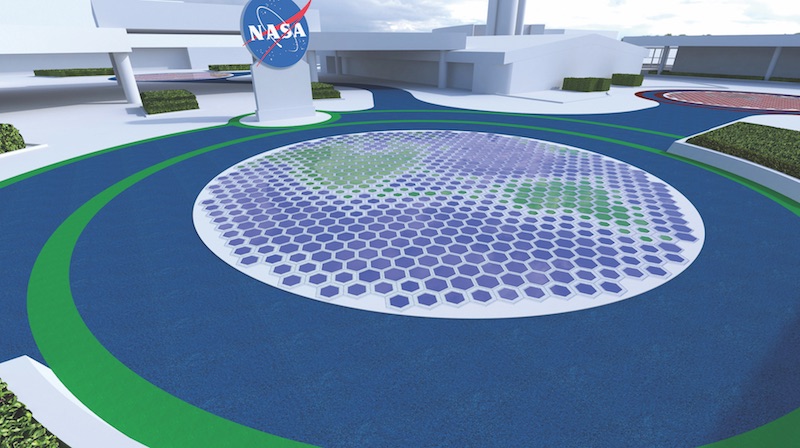Piezoelectricity, an electrical charge that aggregates in certain materials in response to applied mechanical stress, was discovered in the 19th century. In recent times, the technology has found its way into electronic devices and medical sensors. There’s growing interest in using the technology to generate energy from roadway traffic (see related story).
PZ technology is also being studied for its potential for harvesting and redistributing energy in buildings.
The Aerospace Transportation and Advanced Science Lab at Georgia Tech Research Institute (GTRI), Atlanta, is investigating indoor applications of PZ technology, not only as an alternative energy source but also for making buildings smarter by transmitting data wirelessly for analyzing behavior and traffic.
GTRI is working with Emory Healthcare to develop a PZ-powered carpet tile for a flooring system for hospitals that would detect when a patient slips and falls and send out a wireless alert to hospital staff. Every year in U.S. hospitals, between 700,000 and 1 million people have a fall: it’s a tremendous liability headache for hospital administrators. This project, says GTRI Research Scientist Ilan Stern, PhD, is in the prototype/focus-group stage. GTRI is building a lab-scale model into its simulation lab.
 Dr. Ilan Stern of the Georgia Tech Research Institute stands inside a photo booth at Atlanta’s Hartsfield-Jackson International Airport. The booth is activated by electricity generated by foot traffic on the floor mat made from piezoelectric materials. Stern foresees this technology being used for crowd control and security purposes. Courtesy Georgia Tech Research Institute.
Dr. Ilan Stern of the Georgia Tech Research Institute stands inside a photo booth at Atlanta’s Hartsfield-Jackson International Airport. The booth is activated by electricity generated by foot traffic on the floor mat made from piezoelectric materials. Stern foresees this technology being used for crowd control and security purposes. Courtesy Georgia Tech Research Institute.
GTRI also has a contract through the Delaware North Corporation to install 40,000 sf of PZ-enabled pavers along the Visitors Center at NASA's Kennedy Space Center in Florida. Stern explains that the pavers—designed by Dr. Francisco Valdes and Paula Gomez and manufactured by Formations Studio—have glass inserts that act as a kind of interactive keyboard; when energized, the system allows visitors to see visualizations of NASA’s mission statements for space exploration, energy and sustainability, education and wildlife. Stern says it will be operational by next August.
GTRI recently received a $100,000 grant authorized by the Wells Fargo Foundation to evaluate how PZ technology might improve bank security. “The PZ sensors are built into the flooring system, which would act as a tracking and monitoring device to identify where there are people walking in restricted areas,” says Stern. The piezoelectric system would keep working even if power to the bank were cut off.
For the past year or so, passengers and visitors at Atlanta’s Hartsfield-Jackson International Airport have been getting their pictures taken in a photo booth energized by foot traffic. When the booth reaches a certain level of PZ, a camera is triggered, snapping a shot that can be uploaded to social media. Stern sees the day when airports will use PZ-enabled pads and flooring for crowd management and security.
Stern acknowledges that applications for federal grants for PZ research under the new administration will have to be rebranded from their past emphasis on efficiency and sustainability. “While we’re not changing our research, we’re changing our goals to infrastructure and manufacturing,” he says.







